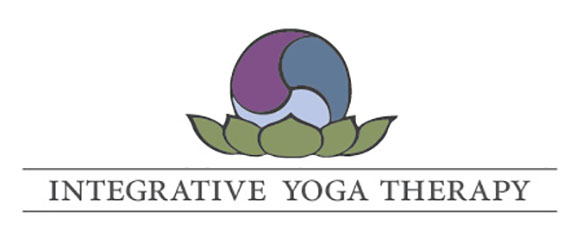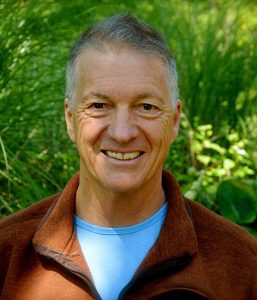 Integrative Yoga Therapy (IYT) founder Joseph Le Page is a pioneer and leader in training Yoga professionals who can bring the ancient insights of Yoga into mainstream wellness programs. His work is based on a vision of health as a unity of body, mind, and spirit. In this interview with Laura Sevika Douglass, Ph.D., he discusses how Yoga can be a primary vehicle for the wellness programs of the future because of its ability to promote health and healing at physical, emotional, and spiritual levels simultaneously.
Integrative Yoga Therapy (IYT) founder Joseph Le Page is a pioneer and leader in training Yoga professionals who can bring the ancient insights of Yoga into mainstream wellness programs. His work is based on a vision of health as a unity of body, mind, and spirit. In this interview with Laura Sevika Douglass, Ph.D., he discusses how Yoga can be a primary vehicle for the wellness programs of the future because of its ability to promote health and healing at physical, emotional, and spiritual levels simultaneously.
Integral Yoga Magazine (IYM): Why do you view spirituality as an important component of Yoga therapy?
Joseph Le Page (JLP): The first thing is to start with the definition of Yoga. Yoga means “union.” It’s a method and practice to bring together the body, mind, and soul. Yoga is a complete system that allows for a systematic change in perspective about how we view life. The discipline of Yoga enables our true Self to come to the foreground, and all of our wants and needs to recede to the background. First we “practice” living as the true Self and through practice we begin to live as the true Self.
Yoga therapy is highly practical. When we go into a Yoga therapy session we’re using the tools of Yoga to deepen into the true Self: asana, pranayama, Yoga nidra, meditation, study of the spiritual texts. While these practices do create a change on an embodied level, their greatest strength is in helping us to look at ourselves in a larger context, that we call spirituality. Introducing spirituality is the most effective and practical thing that we do as it takes us out of our limited, individual sense of self and brings us to the truth of who we really are. Yoga therapy never offers partial solutions. There is only one goal in Yoga: to see ourselves in a new way.
Yoga is not a body movement therapy. If we look at the yogic texts, Yoga is a vehicle and a tool that leads us to our true Self. That is all that Yoga does. When we take Yoga out of the spiritual texts like the Upanishads, Samkhya Karikia and Patanjali’s Yoga Sutras, we can’t call it Yoga therapy anymore.
IYM: How do you begin introducing spirituality to populations that suffer with physical or mental health challenges?
JLP: There might be a bias in the larger community that says, “Well, these people are sick. They can only do a few exercises and movement.” We need to ask ourselves: “What does it mean that we are facing challenges?” It usually means the student is more ready to learn. That person is ready to understand him or herself on a deeper level. Many Yoga therapy groups are simply a Yoga class geared toward a particular population. Our groups provide a structure by which the individual can begin to explore their identity on a deeper level. Each week we start with a different theme. The first week we might deal with the physical aspects of Yoga, like posture, but over the ten week series we begin to explore the subtler levels: where does energy flow in the body? Where is it blocked? What bothers the individual and causes them stress? How do they work with the thoughts? How do they relate with their spiritual sense of self?
IYM: Is the illness a step, or a path toward enlightenment?
JLP: My understanding of the yogic texts is that it doesn’t draw a line between types of illness. Whether you are suffering physically, emotionally, or spiritually—the issue is that you are suffering. Yoga is directing us to move beyond the illness at every level. From a yogic perspective the issue is quite simple: There is just one illness, avidya, or ignorance of your true Self. The Yoga therapists can isolate this posture, that breathing technique, this mudra for this person, but ultimately we must look at what the core beliefs are that keep us from knowing our true nature.
What are the beliefs that encourage us to stay separate and alone? For most of us there are core beliefs that power all of our physical and mental imbalances. These beliefs could be about your parents, insecurities, low self esteem. As we continue on our journey, we see that the deeper belief is that “I am limited.” Our physical and mental illnesses are symptomatic of our separation from the divine. We are all on a journey to recover our wholeness, to heal. As long as we are not on this journey, something in our minds and body will remind us that we need to do something else. The obstacles (our illness, job loss, death in the family) serve to guide us on our journey. The obstacles churn up old belief systems that show us where we need healing.
The most important component of the program is the mudras with affirmation. The mudras and affirmations together create a theme and intention which is woven throughout the entire class. There is never a breath, or meditation that is not geared toward the larger intention encapsulated in the affirmation. Yoga is not working toward the alleviations of symptoms. Yoga is meant to give us a wider vision of life and ourselves. No matter what happens at a physical level in our Yoga therapy classes (in terms of symptoms), real Yoga therapy is what happens at the level of the persons’ perspectives.
IYM: What about Yoga therapy that focuses primarily on how Yoga impacts illness through the biomechanical and neuro-muscular systems?
JLP: We need Yoga therapists doing research and talking about how Yoga asanas impact the well being of our anatomical systems. It’s important to understand and support the vehicle of the body. Yet, in another way, it’s as if we are waiting for God to arrive through the embodied practices. This is never going to happen. God is not going to come to us if we get the asana correct. An intense focus on Yoga asanas is a “theater of the absurd;” it is moving away from God, not toward God. Postures do give us something concrete to focus on, and that can be positive. Indeed, it is because the postures work so well that we don’t go deeper into our practice! In some sense, it’s like taking an aspirin for a headache; it’s easier to fix the symptoms than understand and resolve the cause of our pain. Asana simplifies the complexity of our search for freedom. Asana is much simpler that working with the mind, relationships, and spirituality. Yoga postures are a very simple, straightforward practice that effectively alleviates our suffering. At the same time, we need to ask: “What is this really for? Am I living to do Yoga poses?”
Yoga postures can give us a sense of being grounded, but there is also a milieu of spirituality around them that to which we are attracted. There’s a sense of spirituality in listening to the chanting, and the visual images of saints and sages. The question is, “Is that enough to support my life? Is that the good life? Or is a happy life more than the external trappings of spirituality?”
IYM: Is it possible to research the deeper dimensions of Yoga?
JLP: Research is a very important step in Yoga therapy. Science can study Yoga, but within the scientific method you have to reduce a subject to the least number of variables to make it researchable. When Yoga is a form of movement therapy it is definitely easier to study. For example, we might want to know, “Do these 12 Yoga poses help with depression?” Simultaneously, we have to recognize that this is only part of what Yoga is. Individuals are attracted to scientifically proving Yoga because it can then be integrated into the dominant biomedical model and that has some hope of paying the bills.
The best model is to work from the Yoga texts. Yoga cannot be something we create as movement therapy. Yoga therapists need to understand anatomy, physiology, and the existing research on Yoga, but we cannot confuse this knowledge with the experience of Yoga itself. The way to keep the biomedical model and Yoga compatible is to be very clear that they do different and complementary jobs.
IYM: In some sense the biomedical model adheres to the belief that “I am the body” and the Yoga community attempts to see that we are so much more than this.
JLP: In my experience, the strongest belief that “I am the body” exists in Yoga practitioners who are fixated on postures. There’s often an illusion that if I do Yoga postures “the right way” that the body is going to live forever. The way we practice Yoga in North American reinforces the ideas that the body is who we are; that our beliefs and thoughts are who we are.
I appreciate the gift of having a body and of having thoughts and beliefs. I also live from a certain sense of clarity that my body and mind cannot cause me distress or dissatisfaction in life. The body is a gift, each moment is a gift, and even our problems are gifts. I understand that the body, mind, senses, and the whole adventure of life will end. That is perfect.
IY: What is the role of community in healing?
JLP: We all need a community to validate that we are on the right path. In the group work that I do, people come together to share their tremendous life experience and wisdom. We always start with an educational component and then the whole group shares. We’re a group that is moving together—where everyone is the teacher. People start slowly, at their comfort level, but week by week we begin to share what really matters in our lives. There’s no way to separate Yoga and healing from community. Over time, the entire community heals its incorrect attitudes that lead the individual members to suffer. Change happens in small, incremental, but profound ways.
 About Joseph Le Page:
About Joseph Le Page:
Joseph Le Page and his wife Lilian, are the authors of Mudras for Healing and Transformation and The Yoga Teachers’ Toolbox. Integrative Yoga Therapy, a leader in the Yoga therapy field since 1993, is the result of Joseph’s life experiences, his training as a Kripalu Yoga teacher, and his master’s degree work in experiential education, along with his lifelong interest in mind-body health. Joseph and Lilian are also the founders and directors of the Enchanted Mountain Yoga Center in Brazil, which is one of the largest Yoga centers in South America. It offers a complete curriculum in all aspects of Yoga with a special focus on Ayurveda and Yoga therapy. For more information please visit: www.iytyogatherapy.com.


